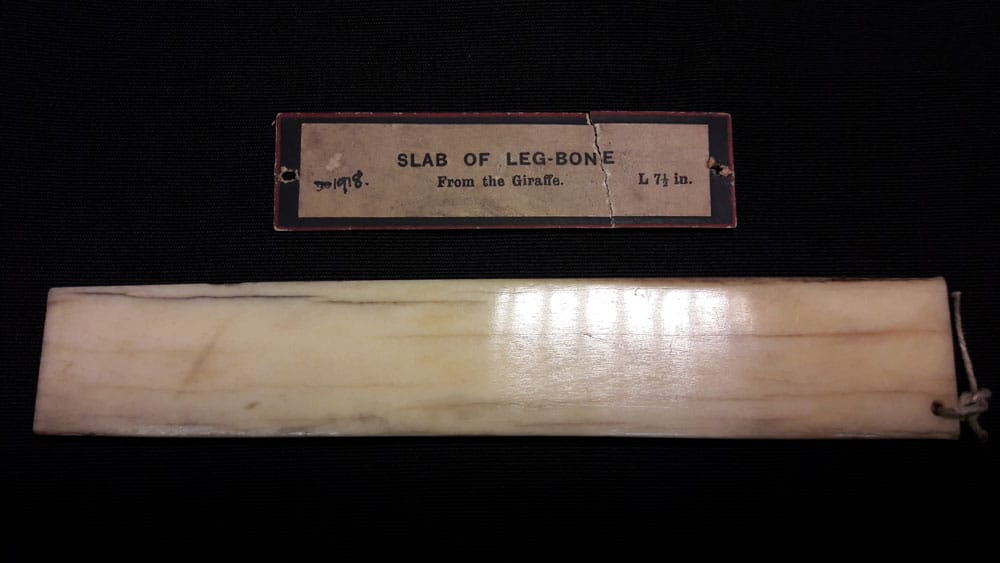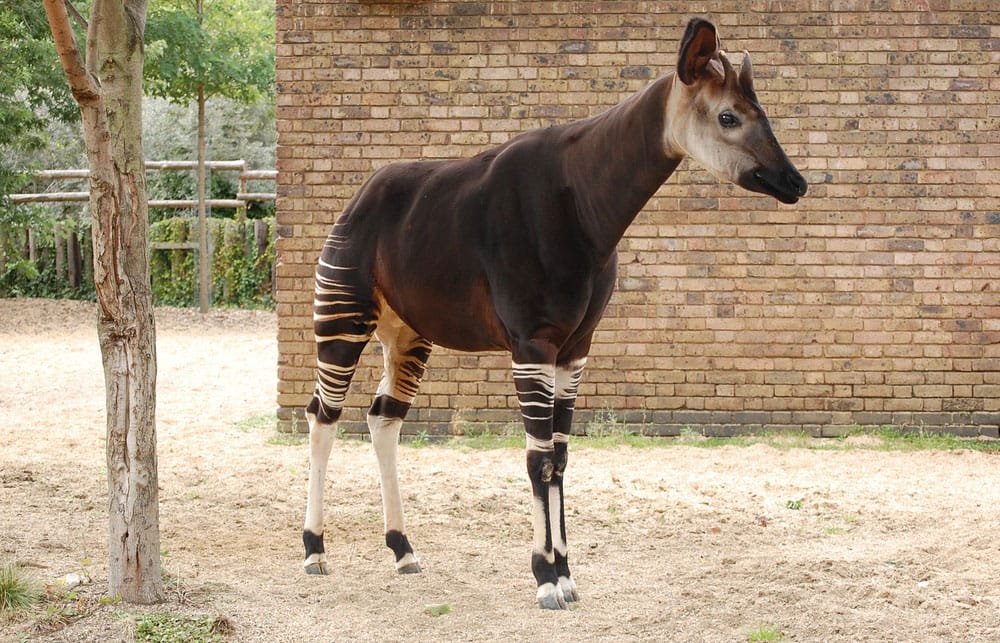How long is a giraffe’s tongue?
A giraffe’s tongue is no less than 45cm in length. Their tongues are prehensile, meaning it can be wrapped around a twig on a tree and used to strip the leaves away. This immense tongue is a dramatic purple-black colour which adds a bit of elegant glamour to the already impressive organ.
Giraffe’s also have horns – they’re not obvious like a rhino’s, but short with a rounded tip. If you visit our mechanical giraffe in The Robot Zoo exhibition take a close look at the horns.
Although we can’t determine the sex of this giraffe, the horns will give it away. Although both sexes of giraffe have horns, females horns are fluffy on top, whilst males horns are bald on top.
A herd of giraffe’s in the wild (giraffe’s are very social animals) will be led by a dominant male and contain a group of females and their young.
How do giraffes communicate?
Giraffes use infrasonic sound, which means we can’t hear them chatting because our hearing range is set too high.
The same sound is used by elephants! giraffes also have a repertoire of bellows, snorts, hisses and a noise that sounds like a flute being played.

What is a giraffes habitat?
Giraffe’s tend to live in semi-arid and savannah woodlands in Africa, and are native to Africa. They are most commonly found in East Africa, particularly in nature reserves such as Serengeti National Park.
What do giraffes eat?
Giraffes are herbivores, and they graze on the leaves and twigs of trees such as acacia, mimosa and wild apricot trees.
What is the closest living relative to a giraffe?
The closest living relative to the giraffe wasn’t known to science until 1901. It is called the Okapi and looks like a cross between a giraffe and a Deer, with Zebra stripes on its bottom and the upper part of all four legs. Given that Okapis are large animals, it feels like scientists at the turn of the last century weren’t doing a very thorough job of looking for new animals.
They live in dense jungles in Africa and their populations are naturally low – the combination of these two elements means they are seldom seen. Additionally, their habitat is shrinking and their populations are becoming even lower.
Another claim to fame for the Okapi is it has a strong connection to the infamous journalist Sir Henry Morton Stanley. If you’re a natural history buff or general know-it-all, you’ll know that Stanley was the chap sent to Africa in the early 1870s to locate David Livingstone, which he did, and (is rumoured) to have subsequently uttered the immortal phrase, “Dr Livingstone, I presume?”
Before the Okapi had been ‘discovered’ by Western scientists, Stanley was told by indigenous people of a horse that lived in the forest, and which had a long neck and striped legs. It turned out not to be a horse, but the closest living relative of the giraffe, and an animal completely new to science – the Okapi.



